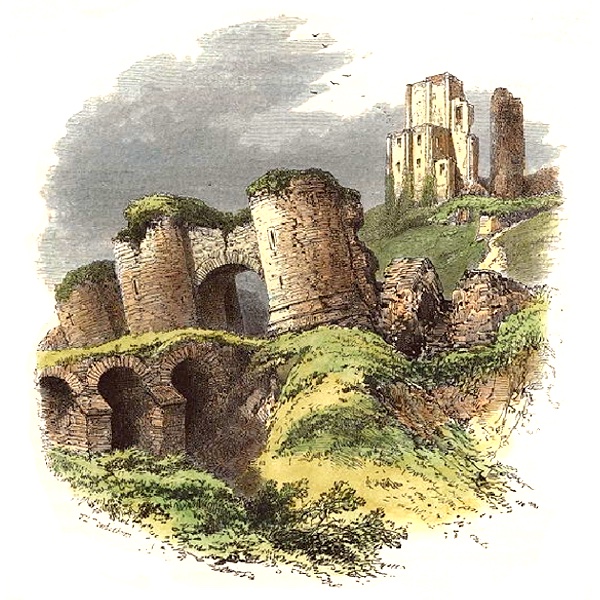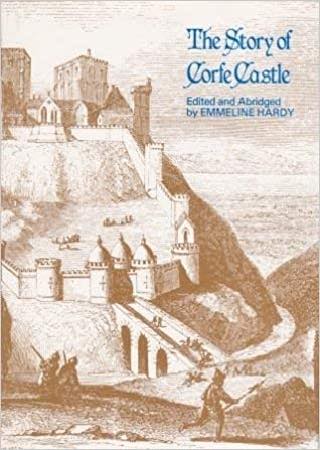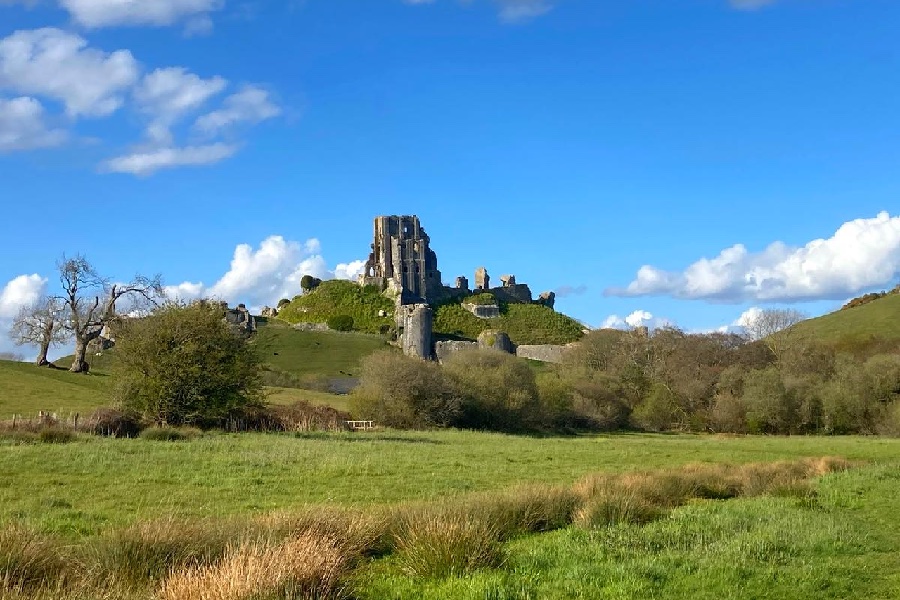
From the Cretaceous and Jurassic periods when dinosaurs roamed the Isle of Purbeck, right up to the modern day, nearly all periods of history are celebrated in and around the village of Corfe, unequalled in the UK.
PRE-HISTORY
Evidence exists on Corfe Common on the southern edge of the village, of a civilisation in 6000 BC. Several barrows (burial mounds) can be seen after leaving West Street onto the common. These people would no doubt have migrated from Europe on the ‘land bridge’ of which the Purbeck hills formed a part.
CELTIC
All around the village there is evidence of Celtic habitation. The Common is an excellent example of a Celtic field system. The primary tribe were the Durotriges (High Kings) who were also evident in Ireland. These peoples migrated from the Middle East and were part of the Kimmiri (Cymri), around 1300 BC. Apart from their abilities as warriors, they were excellent farmers, potters and craftsmen. The local cove of Kimmeridge would probably have been their port.
ROMAN
The Romans probably dominated Corfe around AD50; however, there is strong evidence of a trading relationship, primarily in copper and pottery, perhaps 100 years earlier. The Romans seemed to have co-existed with the Durotriges as trading partners. There is a Villa under the fields at Bucknowle, and several Roman industrial sites surround the Castle. However, there is legend – later chronicled by Thomas Hardy – of a whole Roman legion disappearing in Purbeck; only its ghost remains. Nevertheless, a massive battle ensued between the two at Maiden Castle resulting in the destruction of these Celts.
VIKING/SAXON
Early in the 5th century, as the Romans left our shores, fierce tribes began attacking from Scandinavia and Germany. The Saxons settled here but the Danes plundered for many centuries. It wasn’t until AD875 that things came to a head; King Alfred the Saxon King struck an agreement with Hubba the Dane, a marriage of convenience, but two years later Halfden broke the truce. A decisive naval battle took place; attacked by Alfred’s ships and hindered by a furious storm, 120 Viking ships sank off Peveril Point near Swanage. To prevent further attacks, Alfred built a castle at “Corffe’s Gate”. In AD978 Queen Elfrida murdered her stepson, King Edward the martyr, here; this was in order to put her own son on the throne, subsequently Ethelred the Unready. This triggered many years of Danish plundering. There is a small section of wall in the West of the Inner Bailey of the Castle of a herring-bone design which is probably part of Elfrida’s palace.
NORMAN
In AD 1090 following William’s conquest of Britain, the Corfe Norman Castle was begun. William’s son Henry I was crowned in 1100 and developed the castle keep and inner bailey. Henry left no legitimate male heir; his daughter Matilda claimed the throne, reinforced by an alliance with the House of Anjou through her husband Geoffrey Plantagenet. King Steven claimed the throne for the House of Blois and Civil War ensued. Corfe was besieged by Stephen, but Baldwin de Redvers held the castle for the Empress.
MEDIEVAL
For the whole of the Medieval period, Corfe was a Royal Castle. Kings used it as one of the five royal castles. King John kept his crown jewels here. Edward II was imprisoned here. Much torturing and murder took place. Henry VII gave it to his mother but later it reverted to Henry VIII. Queen Elizabeth sold it to her Chancellor, Christopher Hatton, who fortified it further in readiness for the Spanish Armada.
CIVIL WAR
The Hatton Family sold the castle to the Bankes family. Sir John Bankes was Lord Chief Justice to King Charles I. Civil war broke out and it was left to Lady Bankes (Brave Dame Mary) to defend the castle in 1643 and 1645 through two sieges. She was finally overcome by the treachery of one of her own officers, Colonel Pitman. Following an Act of Parliament, the Castle was then blown up from the inside by engineers.
Those wishing to read more about the history of our village may find ‘The Story of Corfe Castle’ by Emmeline Hardy. It’s available to buy online from Amazon or from the National Trust shop in the village.

Where exactly is Corfe Castle?
Corfe Castle is located in Dorset along the A351 between Wareham and Swanage. The nearest populated areas include Studland to the east and Wareham to the north and Swanage to the south. More information can be found on the How to Get Here page.



